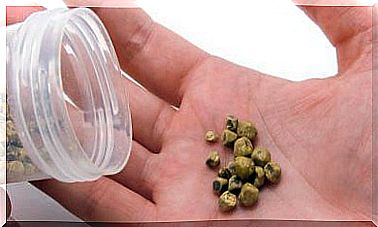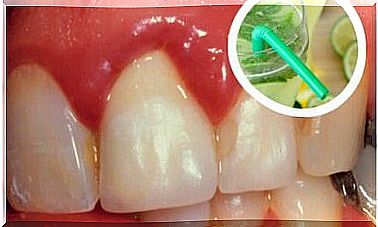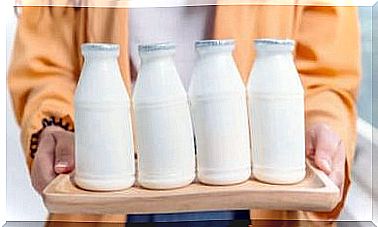What Does The Color Of Fruit And Vegetables Tell Us?
We don’t necessarily choose fruit and vegetables for their color, but it’s still interesting to know what’s behind them. Because red, green or yellow foods have various positive effects on our health.

“Consume at least one dark green and one orange vegetable every day!” These are the specific recommendations made by the Department of Health of Canada. But why is the color of fruits and vegetables so important? Which nutrients are behind it and how do they affect our health?
Of course, not all fruits and vegetables of the same color have the same properties. But the color gives us important information about certain nutrients and consequently also about the properties of these foods.
Phytochemicals: Pigments from fruits and vegetables
We differentiate between macronutrients (carbohydrates, fats and proteins) and micronutrients (vitamins, minerals …). But fruits and vegetables also contain other phytochemicals.
These active plant substances, which are also known as secondary plant substances (SPS), protect the plants from pests, among other things. But they also have different effects on our health. Many phytochemicals have a strong antioxidant effect and protect against diseases such as cancer, degenerative or cardiovascular diseases.
A comprehensive study in this area should enable us in the future to find out more about the color of fruits and vegetables and their effects on our health.
What the color of fruit and vegetables can tell us
In general, phytochemicals that give fruits and vegetables their characteristic color can be divided into three broad groups: carotenoids, chlorophyll and anthocyanins.
Carothinoids: not just for the skin!
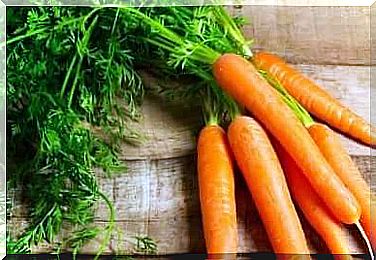
Carotenoids are very important pigments for our health, but we cannot synthesize them ourselves. It is therefore essential to get enough of it through your diet. Orange, yellow and red vegetables make this possible.
The scientific evidence shows that carotenoid consumption reduces the risk of cardiovascular problems. They also have a strong antioxidant effect, protect the skin and contribute to good eye health.
It is important to know, however, that the benefits of carotenoids can only be found in foods and not in dietary supplements. Because until now the same positive effect could not be achieved with dietary supplements.
The following types of fruit and vegetables contain a particularly large number of carotenoids:
- Red varieties: tomatoes, cherries, raspberries, watermelon, red peppers
- Orange varieties: carrots, papaya, peach, apricot, pumpkin, sweet potato
- Yellow varieties: melon, mango, corn
Chlorophyll: the green color should not be missing!
Foods that are high in chlorophyll can be easily identified by their green color. They improve the body’s oxygen supply, support the removal of heavy metals and promote a healthy microbiota.
In addition, various studies suggest that:
Many vegetables contain chlorophyll, for example Swiss chard, spinach, broccoli, asparagus, cabbage or artichokes. These vegetables are usually also rich in vitamin K, folic acid and magnesium. Kiwis also get their green color from this plant pigment.
Most of these fruits and vegetables are hiding a secret: They are also rich in carotenoids, but the yellow pigment is masked by the strong green of the chlorophyll.
Anthocyanins: the purple color is in fashion every day!
Anthocyanins are easy to recognize by their purple and blue colors. Important sources are blueberries, blackberries, grapes, and red cabbage. However, various red fruits, such as strawberries, also contain a high proportion of these plant substances.
The antioxidant effect of anthocyanins has been linked to a lower risk of heart attack in women of young and middle age. Epidemiological studies also associate regular consumption of these phytochemicals with the following benefits:
- Lower risk of cardiovascular disease
- Lower susceptibility to type 2 diabetes
- Neuroprotective effect
- It is easier to maintain body weight
- Lower mortality
What are the properties of vegetables that are white in color?
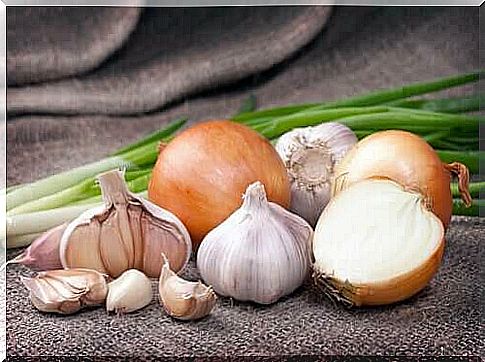
We’d also like to briefly discuss white-colored vegetables, which also have many health benefits. Although they are less noticeable, they still provide important phytochemicals.
Leek, radish, onion, and garlic, for example, belong in this group. Onions and garlic are high in quercetin and allicin, which improve cardiovascular health.
The color of the food in the diet
In a balanced, healthy diet, of course, we cannot rely solely on the color of the food. But this gives us additional information about the nutritional value of fruit and vegetables. Of course, these contain numerous other very important substances, including many herbal ingredients that cannot be recognized by their color.
Nor can we assume that orange or purple fruits and vegetables are healthier than others, or that only red foods should be on the menu as a preventive measure against cardiovascular diseases.
However, it is interesting to incorporate the widest possible variety of colors into our nutrition plan every day. The more colors, the greater the likelihood that no specific nutrient will be deficient.
We can thus guarantee a balanced diet that contains all the important phytonutrients from which we derive great benefit. Of course we have only presented a small selection in today’s article, but of course there is a much wider range of fruits and vegetables.
We also eat with our eyes, which is why a colorful plate is particularly appetizing and stimulating!

